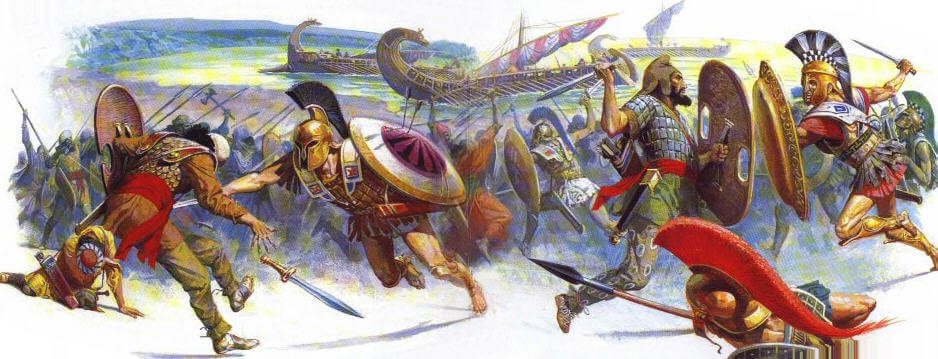The history of Battle of Marathon. Information on Battle of Marathon and the facts. Information about the Battle of Marathon, one of the most important battles in World Military history. Who fought in the Battle of Marathon and when?

Battle Of Marathon; the occasion of a celebrated victory of Greeks under Callimachus and Miltiades over Persians under Datis and Artaphernes, in September 490 or 491 b.c.
An Athenian force of 9,000 or 10,000 men opposed about 20,000 Persians who had established a beachhead below a marsh at the northeast edge of the Plain of Marathon, adjoining the Bay of Marathon. The Persians had been sent by Darius I to subdue all of Greece, beginning with Athens. Datis intended to pin down the Athenian army at Marathon while Artaphernes led a Persian naval expedition against Athens itself, where conspirators stood ready to aid the invaders.
The Athenians hoped to delay battle until promised reinforcements from Sparta should join them, but news of the impending move by Artaphernes and the arrival of 1,000 troops from Plataea, a town in alliance with Athens, nerved them to attack. The Greeks sortied from strong defensive positions in heights overlooking the plain and advanced in a phalanx of spearmen toward the Persians, drawn up along the seashore. Callimachus and Miltiades had placed most of their troops on the two wings of the Greek phalanx. As the Greeks came within range of Persian archers, they broke into a run and their wings probably outdistanced their center. The Persians pushed into the concave Greek line, their center advancing beyond their wings, which met heavier opposition. Soon the Persian center was enveloped on both flanks, with the Persian wings crushed back on it in confusion. At close quarters Persian arrows were useless, but the spears of the Greeks were deadly.
The Persians broke for their ships under close pursuit, losing 6,400 killed. The victors then marched back to Athens and prevented Artaphernes’ expedition from investing the city. Athens lost 192 killed at Marathon. Their bodies were burned on a huge pyre, built on the plain, and were subsequently covered with an earthen commemorative mound 50 feet high. Excavation of this mound in 1890 revealed the remains of the Athenian dead, funeral vases, and weapons. Among the Athenians who fell were Callimachus and Cynegirus, a brother of the tragic poet Aeschylus, who also was present at the battle.